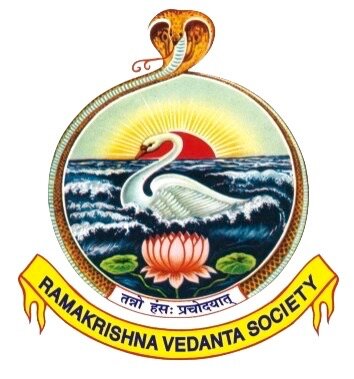Vancouver
Swami Vivekananda left Mumbai on May 31, 1893, and traveled by the steamer Peninsular, visiting Colombo, Penang (an island off the west coast of the Malay Peninsula), Singapore, and Hong Kong. From Hong Kong he went to Japan: first to the ports of Nagasaki and Kobe and then, over land, to the cities of Osaka, Kyoto, Tokyo, and Yokohama.
Swamiji’s Route Map
Swamiji boarded the Steamer Empress of India, which departed Yokohama at 3:40 PM on July 14, 1893. After a 12-day voyage with no stops, the ship reached Victoria in British Columbia, Canada, at 9:00 on the morning of Tuesday, July 25. After a 2-hour stop (for quarantine purposes, when passengers with infectious diseases were required to disembark) the ship continued, reaching Vancouver the same evening at 7:00.
July 25-26, 1893
Vancouver was a bustling port city of 18,000 in 1893 and served as the hub of commerce and shipping, sea and rail, for the northwest coast of America. The city was named after the explorer George Vancouver. The family name “Vancouver” originates from the Dutch “Van Coevorden” (meaning, someone from the city of Coevorden, Netherlands).
A Vancouver paper named The Daily News-Advertiser (July 26, 1893) published the names of the saloon (first class) passengers aboard Empress of India. Swamiji’s name was listed there (not surprisingly misspelt) as “Mr. S. Vivekanandra.”
The paper also published the guest lists in the Hotel Vancouver, the Manor, the Leland, and the Oriental hotels. Swamiji’s name is not in any of those lists. His stay in the city was only a little over 15 hours, too short for a hotel stay. He probably remained on the ship overnight. India’s pioneering industrialist Jamsetji Tata, who founded the Tata Group, India's biggest conglomerate company, was Swamiji’s co-passenger on the ship.
The Canadian Pacific Railway (CPR) station was located adjacent to the dock where the ship lay moored. In fact, the tracks were built on a trestle over the water in order that the train could come very close to the docked steamships. These were located rather close to the present Pan Pacific Hotel at the foot of Howe Street. Evidently, the southern shoreline of Burrard Inlet was quite different in 1893 from what it is today. Considerable landfill has since been applied to the area so that the exact location of Swamiji’s docking would likely be under the ground of present-day Vancouver.
Swamiji boarded the CPR train the next day, July 26, and headed east for Winnipeg, Manitoba—a grueling 60 hours of train travel. It was during this long ride that Swamiji met Katherine Abbott Sanborn (better known as Kate Sanborn), an American educator, author and lecturer, who was professor of English Literature at Smith College in Boston until 1890. Kate Sanborn hosted Swamiji when he visited Boston in less than 3 weeks.
A group of students interested in Vedanta began visiting the Vedanta center in Seattle in 1967. The Vivekananda Vedanta Society of British Columbia (VVSBC) was established in 1978. It is now an official branch of the Ramakrishna Order and serves the people in and around Vancouver.
Sources
Swami Gambhirananda, Yuganayak Vivekananda (Bengali), Kolkata: Udbodhan, 1985.
Lamb, W. Kaye, Empress to the Orient, Vancouver: the Maritime Museum, 1991.
Turner, Robert D, The Pacific Empresses, Victoria: Sononis Press, 1981







